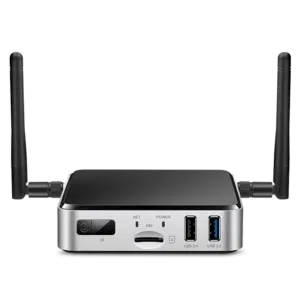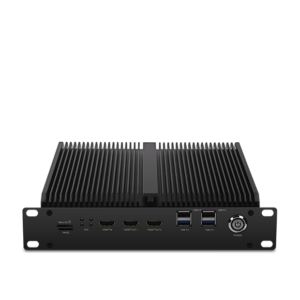The Influence of Running AI on Edge Devices
The Influence of Running AI on Edge Devices
Blog Article
Unlocking the Energy of AI on Side Devices
Real-World Programs of AI on Edge Units
Artificial intelligence (AI) is no more confined to the realm of large, centralized information centers. As a result of improvements in technology, edge products now perform a vital position in deploying AI straight where data is generated. But what does AI on edge devices suggest, and how come it producing such a hype? Here, we'll examine how edge ai hardware runs in the real world through edge units and discover its wide variety of sensible applications.

What's AI on Side Units?
AI on side units describes deploying artificial intelligence algorithms directly on devices like smartphones, cameras, drones, or IoT sensors. They do not require use of centralized servers for control data; instead, they accomplish analysis and choices domestically, creating the method faster, more effective, and usually more secure.
The "edge" here only refers to research done close to or at the origin of data technology, as opposed to relying on the cloud. This shift is driven by the needs for real-time data processing and the necessity to decrease latency, enhance privacy, and reduce bandwidth usage.
Critical Real-World Programs of Edge AI
1. Clever Detective
AI-powered cameras built with skin acceptance, movement detection, and anomaly recognition are transforming surveillance systems. Edge units in that domain may analyze video revenues in real-time to identify dubious actions, eliminate false sensors, and increase public safety. As an example, AI calculations may discover strange activities and alert authorities straight away without the necessity to send video data to a central server for analysis.
2. Healthcare Tracking
Wearable units and portable medical equipment are leveraging m.2 ai accelerator for managing wellness data more efficiently. Edge-based AI in devices like health trackers and smartwatches screens users' vitals, such as heartbeat, oxygen degrees, or blood pressure, in real-time. These systems analyze information domestically and give immediate feedback, paving just how for quicker intervention all through emergencies.
Beyond wearables, sophisticated medical imaging devices built with on-device AI can detect signals of diseases like cancer, permitting earlier diagnoses even in rural parts without web connectivity.
3. Autonomous Vehicles
Self-driving vehicles are among the absolute most well-known samples of edge AI in action. With sensors, cameras, and LiDAR systems helping as information options, AI computations take place onboard these vehicles to produce split-second decisions. From detecting pedestrians and limitations to moving city streets, side AI ensures that the vehicle runs easily and efficiently. The real-time control capability of edge products eliminates the dependence on high-latency cloud systems, ensuring safety in life-critical scenarios.
4. Retail Analytics
Edge devices in retail surroundings are supporting businesses analyze consumer behavior. Clever cabinets and AI-equipped cameras can detect client preferences, monitor inventory, and also customize in-store experiences in real time. The information developed from they helps shops produce knowledgeable decisions, increase client satisfaction, and enhance supply management.

5. Professional IoT
Factories and professional crops are adopting side AI to revolutionize their monitoring and automation processes. AI-powered devices on equipment find potential flaws a long time before they cause costly failures. Predictive preservation pushed by edge AI decreases downtime, enhances productivity, and assures safety on the production floor.
6. Individualized Activities in Customer Devices
Your smartphone is a primary example of how side AI personalizes individual experiences. Functions such as style personnel, adaptive camera settings, and on-device language translation use real-time AI to answer individual needs without giving sensitive knowledge to external servers. This fosters equally ease and privacy for the end user.
The Rising Affect of Side AI
The adoption of AI on side products remains to surge, pushed by industries' increasing need for low-latency, real-time processing, and higher data privacy. Its purposes are reshaping industries including healthcare and automotive to public protection and retail. By adding AI's power nearer to where data is developed, edge devices are not only improving efficiency but in addition demonstrating the countless potential of innovation in today's linked world. Report this page